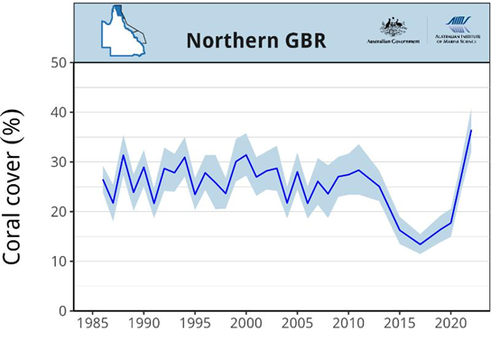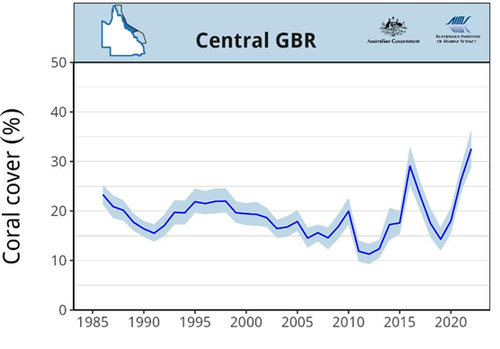Do not fall for the Global Warming Scam!
Yes the planet is warming, but nobody knows if it is a short or long term cycle and even less if we have anything to do with it. The models are not clear. According to some models, it looks like temperatures go up first then CO2, not the other way round, and mostly, it is likely to be more related to the sun than human activity. There are so many "unknowns" and question marks that contrary to what you hear in the Medias, the science is not settled. These are not "climate skeptics" or whatever the ostracizing word of the day may be, just science: We don't know!
Here's a very good subject that I happen to know particularly well and which has been used and abused over the last few years: Coral bleaching.
When you dive somewhere and see large areas all white, it can be quite impressive and certainly looks like a good example of climate damage... Except that this is not the case. Here too, you are being bamboozled.
First, it is never ALL the corals which are bleached, just a few species which of course can be impressive if these particular species represent a large proportion of the living organism in an area. Second, the cause is almost never, just high temperatures, (You will find the most beautiful corals in the warmest seas of Indonesia and Papua New Guinea) but a mixture of temperature AND pollution, human or natural. Finally, if you come back to the same area a few years later, if the pollution is less, then systematically the corals are back. Always!
Conclusion: Humans are killing corals with pollution, not high temperatures. It makes a lot of sense. Temperatures have gone up and down over the ages, sometimes much higher than today when even polar seas were warm with healthy corals everywhere. These animals have an incredible ability to recover. They have done so for hundreds of millions of years. They recolonize an area within a few years, not partially, completely!
So whenever you hear about coral bleaching as a proof of global warming, take that warning with a pinch of salt. (The Picture is of me in Okinawa last year.)
Authored by Chris Morrison via DailySceptic.org,
The near vertiginous rise in the annual growth of coral at the Great Barrier Reef (GBR) is continuing, with further major increases recorded across large areas.
According to the 2021-22 annual summary from the Australian Institute of Marine Science (AIMS), levels of coral cover in the northern and central areas of the reef were at their highest levels over the past 36 years of monitoring.
The growth is of course excellent news for environmentalists, but curiously, at the time of writing, the news is being downplayed in the mainstream media. The demise of the world’s coral reefs has long been a go-to poster scare story for Net Zero promoters. As late as October 2020, the BBC was telling stories about the Reef losing half of its coral. The Guardian was one of the first to set the coral doomsday ball rolling when George Monbiot told its readers in 1999 that the “imminent total destruction of the world’s coral reefs is not a scare story”. Noting the recent record growth, the newspaper added that “global heating could jeopardise recovery”.
This notion that global warming will cause corals to die is frankly a big whopping fib. Tropical coral, which is closely related to its cnidarian cousin the jellyfish, thrives in waters between 24°C and 32°C. It is highly adaptable but seems to dislike sudden changes in temperature, often caused by natural weather oscillations such as El Niño events. As the latest results from the AIMS show, coral quickly recovers when normal localised conditions return. In fact, coral often grows faster in warmer waters nearer the equator than the GBR. The big agitprop lie suggests minor long-term sea temperatures changes will wipe out the coral, but the scientific evidence suggests otherwise.
The sensational growth is clearly seen in the above graph for the northern reef. Recovery is said to have continued following a “period of cumulative disturbances” from 2014 to 2020. Only three of the 24 reefs surveyed in the last two years had decreased hard coral cover. The biggest disturbance, of course, arose around 2016 and was caused by a powerful, and natural, El Niño Pacific oscillation that quickly raised surrounding ocean temperatures by up to 3°C. Sudden warming spooks the coral and they expel symbiotic algae in a process commonly known as bleaching. As we can see, this is quickly reversed when sea temperatures stabilise. Corals have been around, in one form or another, for 500 million years. It is likely this natural process extends back that far to the birth of life as we know it on Earth.
In the central reef, the declines seen in 2012 and 2016 were due to natural events, namely Cyclone Yasi in 2012 and El Niño in 2016. The latter led to bleaching to around 2019, and matters were not helped by outbreaks of crown-of-thorns starfish attacks. Since then, the growth has been spectacular. Last year saw hard coral cover increase to 33%, said to be the highest for this region. Over the last two years, hard coral cover declined on only four individual reefs, and increased on most of the rest surveyed.
The southern part of the GBR has generally displayed the highest coral cover, but according to the AIMS it has been the most “dynamic” over the 36-year survey history. In recent years there has been good growth after the 2016 El Niño depredations, but there have been major attacks by starfish. AIMS notes that many southern reefs have high coral cover, but starfish continue to decimate some areas.
Overall, the GBR seems to be in excellent shape.
The AIMS notes that in the northern and central regions, hard coral cover reached 36% and 33% respectively. Reefs consist of much more than hard coral and contain a diversity of other species along with sponges and algae. The AIMS defines 30-50% as a “high value”, based on historical surveys.
Nevertheless coral is still too valuable a weapon in the green agenda to be discarded lightly. Despite highlighting some stunning reverses of the recent natural coral declines, the AIMS seems to be sticking to the trendy apocalyptic story.
“The predicted consequences of climate change, which include more frequent and intense mass coral bleaching events, are now a contemporary reality. Simultaneously, chronic stressors such as high turbidity, increasing ocean temperatures and changing ocean chemistry can all negatively affect recovery rates, while more frequent acute disturbances mean that the intervals for recovery are becoming shorter,” it concludes.
For what it’s worth, my own hunch is that the little critters will still be around in another 500 million years, maybe longer.




No comments:
Post a Comment